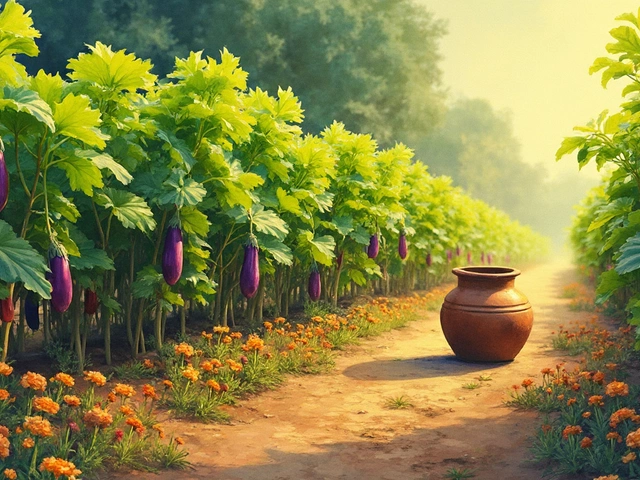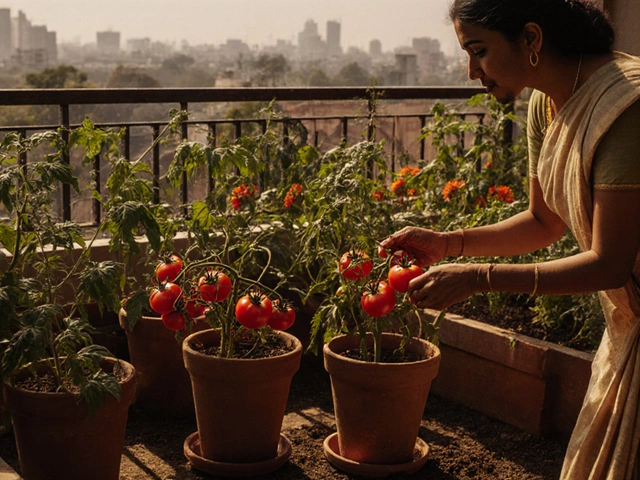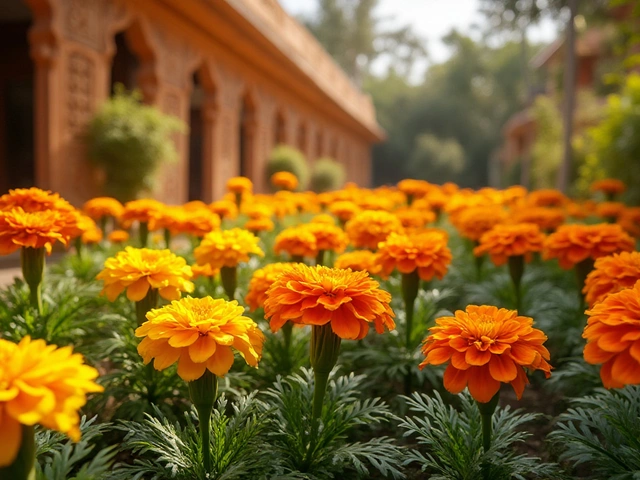India's lush landscapes are a testament to the nation's unparalleled botanical diversity, nurtured by an array of climates ranging from tropical to alpine. This vibrant tapestry of native plants forms the backbone of many traditions and livelihoods, offering a glimpse into the harmonious relationship between people and nature. These plants are not merely greenery; they hold cultural, medicinal, and economic values that weave through the daily lives of millions.
In this exploration, we delve into the world of India's native flora, uncovering their unique characteristics and seasonal behaviors. As the seasons change, so does the landscape, presenting a riot of colors and fragrances. From the time-honored banyan tree stretching its roots across histories to the delicate jasmine flowers that perfume the air, India's native plants are gardens of stories waiting to be told.
- Introduction to Indian Native Plants
- Significance of these Plants in Indian Culture
- Seasonal Growth Patterns
- Interesting Facts and Uses
- Tips for Growing Indian Native Plants
Introduction to Indian Native Plants
India's emerald landscapes are teeming with a fascinating eco-symphony of native plants that tell stories of evolution and survival across millennia. This incredible spectrum of flora has thrived in environments as varied as the sun-kissed coasts of Goa to the snow-draped peaks of the Himalayas. These plants have adapted ingeniously to their habitats, morphing into forms that have piqued the interest of botanists and nature enthusiasts alike. Traditional festivals in India often incorporate these plants, reinforcing their cultural ties. For instance, the banyan tree, with its expansive canopy, invites gatherings beneath its shade, while its aerial roots echo tales of timelessness and endurance.
Navigating India's native plant diversity is akin to stepping into an ancient, living museum where each plant exhibits unique features honed by nature's own hand. The sacred fig, known as the peepal, is revered not only for its religious significance but also its oxygen-producing prowess. It's considered auspicious to plant one near homes, highlighting its environmental significance. In southern India, the coconut tree dominates coastal landscapes, offering sustenance and utility in myriad forms, making it an integral part of local livelihoods. Globally recognized flora like the neem tree, which has been crowned as a 'village pharmacy,' underscores the medicinal riches embedded within India's botanical catalog. The natural habitat of these plants is often protected and celebrated, as the flora is seen as an integral part of the traditional and cultural rituals of the region.
The profound relationship between Indians and their native plants is often heralded by the wisdom passed down generations. Indians have always had a deep-seated connection to their land, evident in how they honor and utilize plants in daily life. According to an ancient Sanskrit saying captured poetically in the Vedas:
"Within this garden lay healing; within these boughs, strength of a thousand suns."Such reverence is mirrored in the sustainable practices advocated by communities, ensuring the preservation of these Indian plants for future generations. They form an educational backbone for environmental conservation efforts, as more people are encouraged to cultivate native species, thereby enhancing their resilience to climate change impacts.
Significance of these Plants in Indian Culture
The native flora of India is intricately woven into the very fabric of its culture, history, and spirituality, extending beyond mere botanical interest to hold considerable cultural significance. Take the sacred banyan tree, symbolizing eternity and life; it isn't just a massive tree with aerial roots, it's an integral part of myths and folklore. In villages, it's often the hub of social gatherings and discussions, providing shade and a natural assembly ground under its leafy canopy. This aspect of the banyan tree as a community focal point can be traced back to ancient times, suggesting that it might have been this way when kings held council meetings beneath its boughs.
Among the indigenous plants, the neem tree holds a place of immense reverence. Known for its medicinal properties, it’s used in traditional Ayurvedic practices to treat a myriad of ailments, and its bittersweet leaves are believed to have purifying properties. From calming skin issues to promoting digestion, neem showcases a blend of nature’s healing with daily well-being. In many households, its twigs are even used as toothbrushes, a practice rooted in ecological comprehension and hygiene, passed down through generations.
"The tulsi plant, revered as Holy Basil, is deeply embedded in Indian households and is considered sacred. Its presence in homes is synonymous with happiness and well-being, reflecting deeply rooted spiritual beliefs." - The Day Book of Indian Culture
The influence of native Indian plants extends to culinary traditions as well. Cardamom and turmeric are not just flavors but embody health, healing, and are intrinsic to the culinary tapestry that defines Indian cuisine globally. The wisdom of utilizing such plants comes from a deeper understanding of how nature complements food with nourishment and health benefits, an ancient knowledge still applied in modern kitchens.
The sandalwood tree also embodies cultural vitality, cherished not only for its fragrant wood but for its sacred and ceremonial use. Sandalwood paste is used in rituals and ceremonies, and its scent permeates temples, invoking spirituality and sanctity. The economic value of sandalwood, however, competes with its cultural heritage, leading to conservation efforts to preserve this plant for future generations.
The cultural narrative of these native Indian plants is not merely a reminder of the past but an ongoing dialogue between nature and society. They serve as silent witnesses to history, contributing to India’s rich tapestry of cultural expressions and ecological harmony. This dialogue continues, vibrant and unyielding, carrying messages of sustainability and respect for nature to the forefront of contemporary lifestyles.
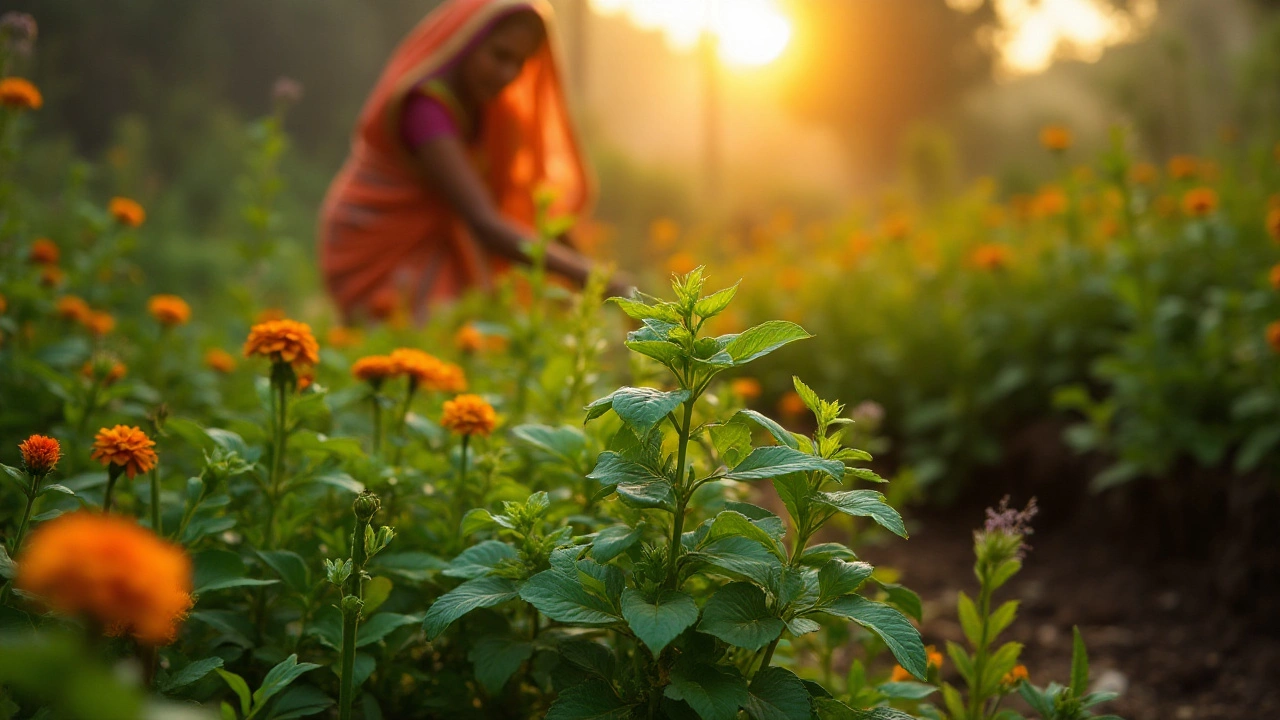
Seasonal Growth Patterns
India is a land of diverse climatic zones, each nurturing its own unique set of Indian plants. Understanding the seasonal growth patterns of these plants requires a look at the cyclical dance between climate and vegetation. In most regions, India experiences four distinct seasons: winter, summer, monsoon, and post-monsoon, each influencing plant life in remarkable ways. The monsoon, with its heavy rains, breathes life into dormant seeds, transforming dry landscapes into lush green paradises. For instance, the bright and fragrant jasmine blooms most prominently in these wet months, filling the air with its heady aroma.
In the searing heat of summer, many native trees like the sacred neem adapt by shedding older leaves to conserve water, a crucial trait that helps them survive until the rains replenish their lifeblood. On the other hand, the iconic banyan tree shows resilience year-round, rooted firmly in soil, symbolizing longevity and stability amidst the changing seasons. The winter season, though mild in much of the country, favors plants such as mustard and wheat in northern plains due to optimal growing conditions. Akins to a tapestry, each season threads its own hue into the fabric of India's botanic panorama, creating a vibrant display that is both visually and ecologically enriching.
"To appreciate the varied growth of native flora in India is to connect with cycles as old as the Earth itself," says botanist Madhav Gadgil, reflecting on the adaptive nature of Indian plant species.
Interestingly, some plants have developed unique mechanisms to thrive across seasons. The sandalwood tree, native to the region, slowly builds its precious heartwood over years, independent of external changes, and ultimately contributes significantly both economically and culturally. This dynamic interplay offers profound lessons for conservationists and botanists who aim to preserve these rich ecosystems. Understanding these patterns can also be vital for choosing the right plant for cultivation or research. Knowing when to sow or transplant these seasonal plants can optimize their growth, harnessing each unique season's potential to its fullest extent. Thus, every flourish of foliage or burst of blooms narrates tales of survival and synergy, stories as deeply rooted as the nation itself.
Interesting Facts and Uses
The rich diversity of Indian plants provides a treasure trove of interesting facts and practical uses that have shaped cultures and ecosystems for centuries. These indigenous species are more than just a sight for sore eyes; they are a cornerstone of India's heritage and are deeply embedded in everyday life. For instance, the legendary banyan tree, Ficus benghalensis, is not just a plant; it symbolizes strength and longevity in Indian folklore. Many towns revolve around these iconic giants, whose canopy can spread over several hectares, providing both shade and a natural gathering space for locals. Its aerial roots descend majestically from branches, making it a living monument to the interconnectedness of life.
The aromatic sandalwood tree, with its soothing scent, is another marvel. A staple in the production of incense and perfumes, this precious wood is a quintessential element of religious ceremonies across India. It is said that the essence of sandalwood brings clarity and tranquility, properties that have been revered by many for spiritual practices. According to historical records, sandalwood paste was considered sacred by deities and believed to purify surroundings when used as a natural fumigant. Today, its oil is a sought-after ingredient in high-end cosmetics owing to its anti-inflammatory properties.
"The use of native plants in traditional medicine is a testament to their enduring value," notes botanist Dr. Nisha Patel, highlighting the integral role many Indian flora play in Ayurveda and Siddha systems of healing.
Among the culinary delights, the curry leaf plant, or Murraya koenigii, stands out. Often overlooked, this plant's glossy, aromatic leaves are a staple in Indian cuisine, imparting a distinct flavor to a plethora of dishes. Beyond culinary uses, these leaves have been used traditionally to aid digestion and control blood sugar levels, showcasing their role in promoting health through diet. Another fascinating plant is the neem tree, Azadirachta indica, renowned for its versatile use in agriculture as a natural pesticide, in skincare for its antibacterial properties, and in medicine as a holistic remedy for various ailments. Neem leaves are also chewed to boost immunity—an age-old practice still alive in rural parts of India.
The Plant's Protective Powers
Exploring deeper into the ecological benefits, many native flora serve as natural protectors of the environment. They act as crucial players in stabilizing soil and reducing erosion, adapting resiliently to local climates, and often requiring less water than introduced species. India's native grasses, for instance, have been pivotal in preventing desertification in arid regions, shielding landscapes like Gujarat's drylands through sustainable practices like vegetation restoration projects. These plants foster biodiversity by providing habitat and food sources for myriad animal species, sustaining entire ecosystems.
Traditional wisdom also harnesses these plants' ability to restore balance within landscapes. In agricultural settings, companion planting with Indian botanicals can repel pests, reduce reliance on chemical fertilizers, and improve yield quality. Farmers practicing organic farming in regions like Kerala and Karnataka often interplant crops with species like the lemon grass for its pest-deterring fragrance or set up hedgerows with the clumping vetiver grass to safeguard against soil erosion.
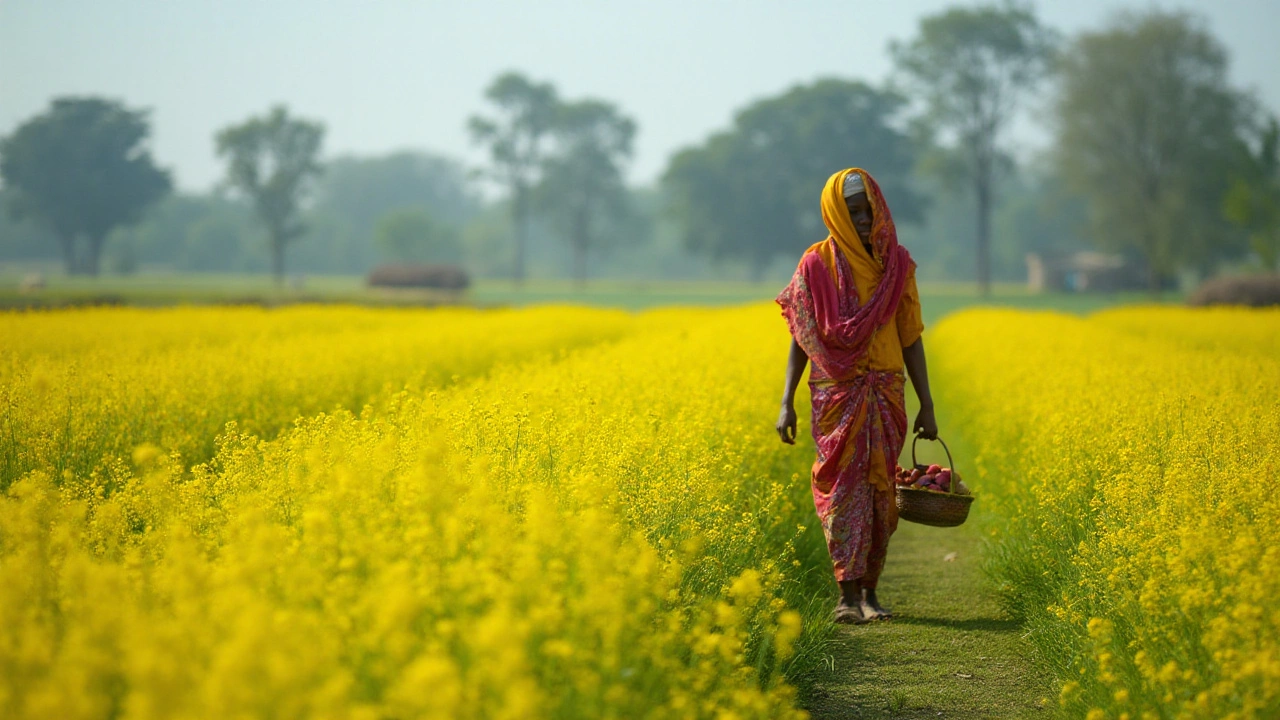
Tips for Growing Indian Native Plants
Growing Indian plants in your garden can be a rewarding endeavor, adding a touch of fragrant, aesthetic, and ecological value. While these plants are naturally suited to India's diverse climates, replicating their growth conditions elsewhere demands some careful planning and understanding. Begin by thoroughly researching the specific environmental needs of the plant species you are interested in cultivating. Consider factors such as sunlight, soil type, water requirements, and temperature range, as these play critical roles in the healthy growth of any plant. Many native flora, like the neem and banyan, thrive in well-drained soil and can tolerate direct sunlight for most of the day. However, others like the monsoon-soaked ferns need more shaded and moisture-rich conditions.
One might underestimate the importance of soil preparation, but it's crucial for the successful cultivation of these seasonal plants. Ensuring that the soil is rich in nutrients and organic matter can greatly enhance plant health and vitality. Composting kitchen waste and leaf litter can provide an inexpensive and effective means to enrich your garden soil. Understanding the pH level of the soil is equally important, as specific plants may require either more acidic or alkaline conditions to flourish. Regular soil testing can guide you in creating an optimum environment tailored for your plant's needs. In urban settings, the use of raised beds can help in controlling these factors more precisely and prevent waterlogging during the heavy monsoons.
India nature is marked by its unique relationship with water, and so too should be your garden. Proper watering is essential to maintain the vigor of your plants. Native plants often develop resilience to seasonal droughts and heavy rains, but younger plants or those grown in foreign soils may need more attention. Utilize practical watering techniques such as drip irrigation or rainwater harvesting to conserve resources and maintain adequate soil moisture levels. One might also explore mulching as a technique to retain soil moisture, regulate temperature, and promote healthy root development. As an old saying goes, 'The best fertilizer is the gardener’s shadow,' this highlights how attentive and regular observation can lead to a thriving garden.
When planning to cultivate Indian native plants, it's always beneficial to keep biodiversity in mind. Companion planting can support a balanced ecosystem within your garden, where plants support each other's growth by deterring pests and enhancing nutrient availability. Mixing plants that flower at different times of the year can ensure a year-round blooming garden. Create clusters of varied species, such as combining the sacred tulsi with cheerful marigolds, to attract a range of pollinators and beneficial insects, thereby sustaining the cycle of life. As you grow your garden of Indian plants, remember they are more than just flora; they are carriers of heritage and biodiversity.
In recent years, there's been a notable rise in the global interest towards native plant gardening due to its ecological benefits and sustainability. According to a report by Horticultural Society of India, local plants such as neem can release phytoncides, natural compounds that help detoxify the air and create a healthier environment. This kind of gardening not only beautifies your landscape but also plays a part in environmental conservation. Emulate this practice by dedicating a corner of your garden to medicinal species like turmeric, known for its antioxidant properties, or lemongrass, whose scent can ward off mosquitoes. By doing so, your garden becomes a living pharmacy, a sanctuary that bridges the gap between nature and urban life.

